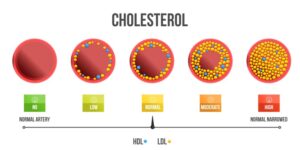Digital Twins in Practice in Healthcare: How Are They Used?

In the realm of healthcare, the concept of digital twins is revolutionizing the way medical professionals approach patient care. A digital twin is a virtual replica of a physical object, process, or, in this case, a human body.
By leveraging technologies such as artificial intelligence (AI), machine learning (ML), and the Internet of Things (IoT), healthcare providers can create digital representations of individual patients, enabling personalized and more effective treatments. Let’s delve into how digital twins are used in healthcare and the impact they’re making on patient outcomes.
Enhancing Diagnosis and Treatment Planning
One of the primary applications of digital twins in healthcare is in enhancing the accuracy of diagnosis and treatment planning. By analyzing a patient’s medical history, genetic information, and real-time data from wearable devices, a digital twin can provide insights into the progression of diseases and recommend personalized treatment plans.
For example, in oncology, digital twins can simulate the growth of tumors and predict their response to different treatment options, helping oncologists choose the most effective approach for each patient.
Personalized Medicine
Digital twins play a crucial role in the advancement of personalized medicine. By creating a detailed digital representation of a patient, healthcare providers can tailor treatments to individual characteristics, such as genetic makeup, lifestyle factors, and environmental influences.
This personalized approach not only improves treatment outcomes but also reduces the risk of adverse reactions to medications, as treatments are specifically tailored to each patient’s unique physiology.
Remote Monitoring and Predictive Maintenance
In addition to improving patient care, digital twins are also used to monitor the health of medical equipment and predict maintenance needs.
By creating digital twins of medical devices, healthcare facilities can track their performance in real-time, identify potential issues before they occur, and schedule maintenance proactively.
This proactive approach helps prevent equipment failures, ensuring that critical medical devices are always available when needed.
Surgical Planning and Training
Digital twins are revolutionizing surgical planning and training. Surgeons can create digital replicas of a patient’s anatomy to simulate complex surgical procedures, allowing them to plan the surgery in detail before entering the operating room.
This not only improves the precision and safety of the procedure but also reduces the time spent in surgery, leading to faster recovery times for patients.
Additionally, digital twins are used in training new surgeons, providing them with realistic scenarios to practice on before performing surgeries on actual patients.
Improving Patient Outcomes
Overall, the use of digital twins in healthcare is transforming the way diseases are diagnosed, treated, and managed.
By providing healthcare providers with detailed insights into individual patients’ health, digital twins are improving patient outcomes, reducing healthcare costs, and advancing the field of medicine.
As technology continues to evolve, we can expect digital twins to play an even larger role in healthcare, ushering in a new era of personalized and effective patient care.
Conclusion
Digital twins are revolutionizing healthcare by providing virtual replicas of patients that enable personalized treatment plans, enhance diagnosis accuracy, and improve patient outcomes. With the continued advancement of technology, digital twins are set to transform the healthcare industry, offering new possibilities for personalized medicine and more effective patient care.
For more insightful articles on the latest trends in healthcare and technology, visit usblogsphere









